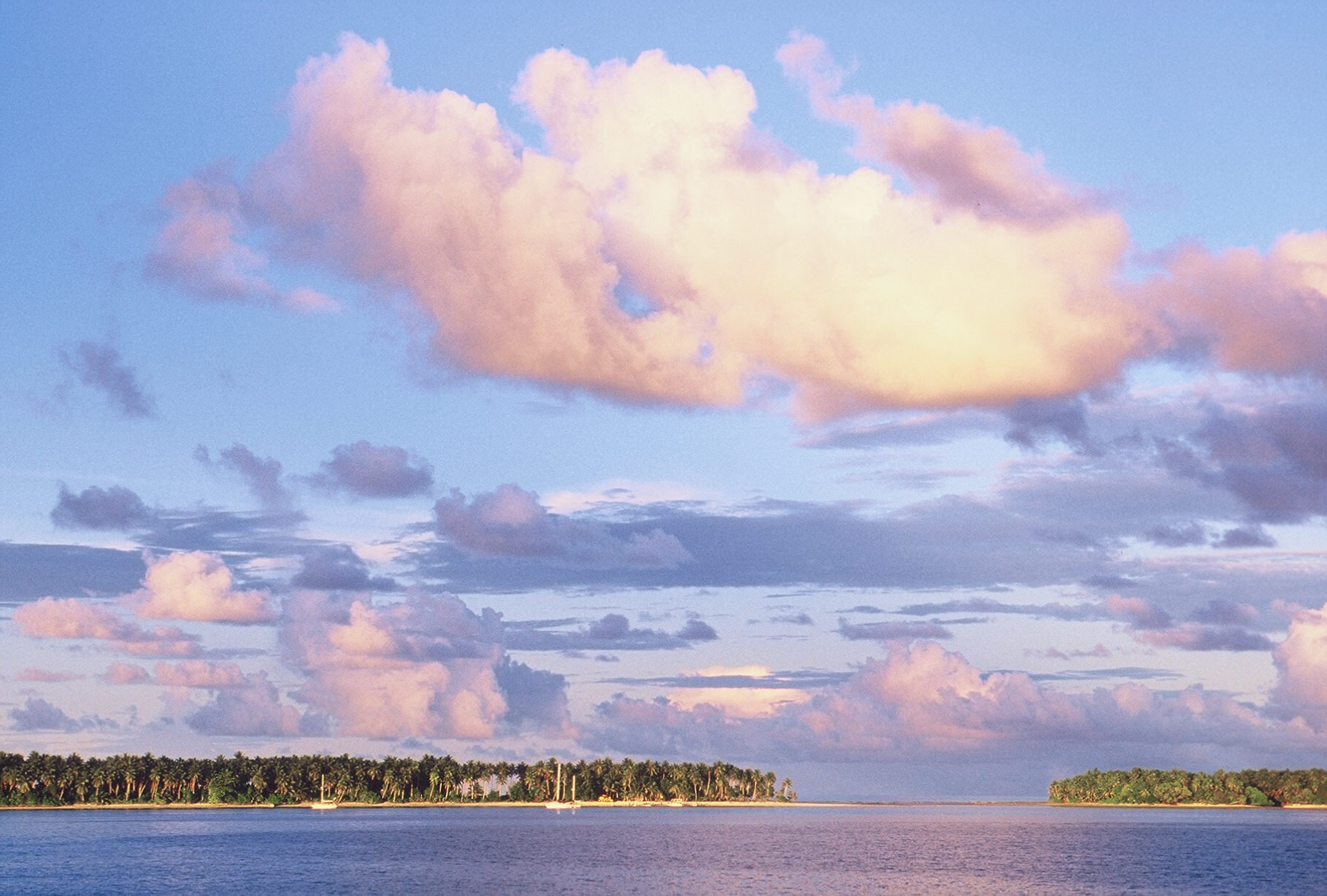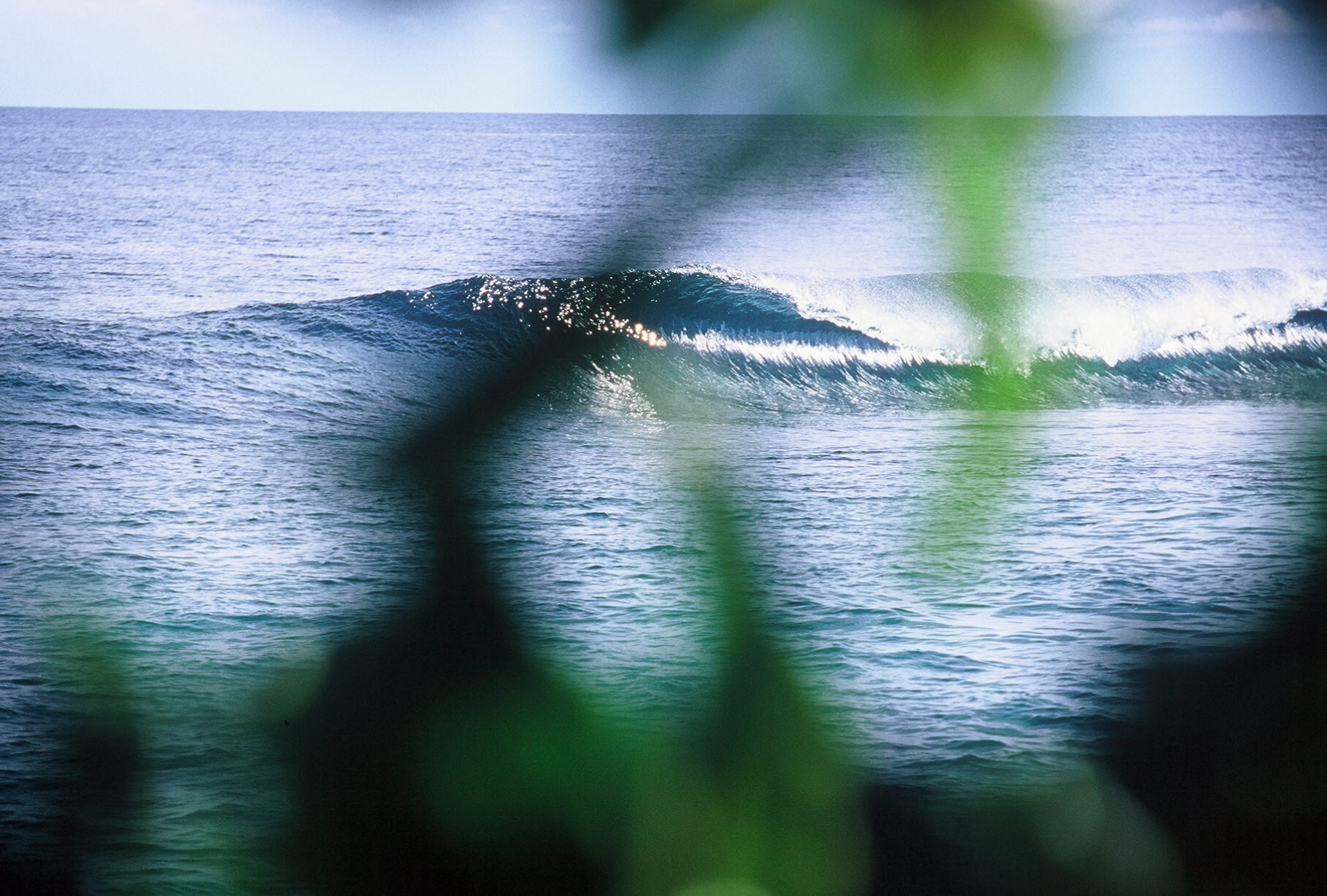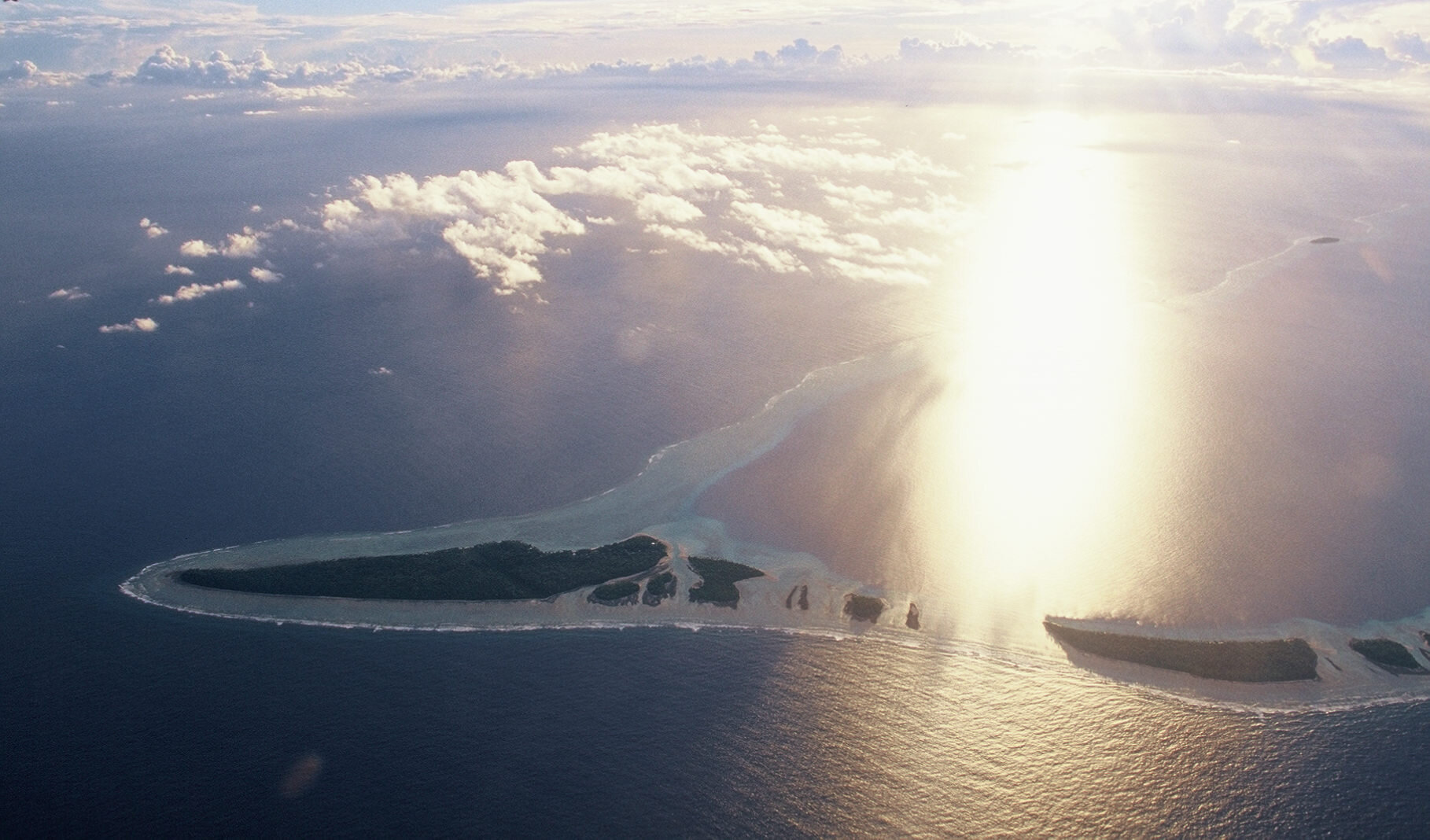Thalassic Holographic
By Michael H. Kew
Islands have always entranced me. As a child I felt we zimmed and zoomed among a great galaxy of them, a celestial sea, a roaring infinity of geologic poetry.
Monthlies to which my parents subscribed—Smithsonian, Discover, and especially the savory-inked National Geographic—would cast my mind aswirl. These were the purest of brain food unlike the mean bone groan of elementary school drone. Vivid printed prisms still alien to me would catalyze our mystic world far beyond Encinitas, a world of monumental seas and spaces that found my boyhood bubble bursting with daydreams.
Raised in that starry dirt-roaded slice of San Diego, many hours were spent beneath the atmospheric indigo well before my reclusive rural mind fixated on surfing. I absorbed chaparral biome phenomena of that sweet open sage air, of the ubiquitous coyote brush and chamise and ephemeral crawdad creeks. And, on the sharpest of new-Moon nights, the panoramas of constellations that spoke of mysterious energies, the absolute deepest secrets of nature.
On many wee eves in the mid-1980s, my four siblings and I switched the lights off and crowded our parents’ old saggy brown couch to watch reruns of Sir David Attenborough’s Life on Earth and The Living Planet. In that room, aglow from phosphor, it became clear to me that our huge spinning ball was layered with as many life forms as it was with islands. Islands seemed to be esoteric labs unto themselves, all in their own exclusive sort of mycorrhizal network, yet each was a solitary planet as untouchable as Neptune.
But not to Attenborough. In his crisp British cadence, the eminent poet-naturalist delighted us with Darwin’s theory of natural selection, with the ripply Rafflesia flowers of Sumatra, with the tremendous torpid tortoises of Seychelles. There was the Great Barrier Reef, a craggy sort of unpeopled submarine isle. There was holy infernal Iceland and the beastly bug-eyed lemurs of Madagascar. In detailing the evolution of fish, there were the lean little lancelets and the vacuum-faced lampreys and soon Attenborough had unveiled to us the great surfy island country-continent of Australia, home to armies of furry exotics like koalas, wombats, kangaroos—creatures I thought could only ever live on islands. I longed to see those sweet tortoises pad across their iodine-splashed isle of Aldabra and contrast them to the primeval hissing Komodo clans of deeply jungled Nusa Tenggara.
Fascinated by wings, my nascent avian interest was fueled by views of the great migratory flocks at Gibraltar and the elaborate tap-dancing birds-of-paradise in Papua New Guinea. These green sawtoothed bumps of rock further mystified me after I again saw them on Nova and on Nature, both shows hosted by the honey-voiced George Page. In the flesh nearly two decades later, at last I could lay eyes on those birds-of-paradise amid a fruitful surf search with a platonic girlfriend in the sun-soaked Solomons, a Melanesian wonderland where celluloid fantasy could ever morph to fragrant reality.
Literarily I knew some of my mother’s old musty tomes that hummed of isolation (Robinson Crusoe), of adventure (Treasure Island), of fear (Lord of the Flies). As the latter book featured tots my age, I read it thrice, often deep into the night with a dim bulb under my white bedsheets as not to disturb brother Whitney, my roommate of 14 years until he himself left for bigger books. He spent a year of study in England, Great Britain indeed an island and seed of my father’s genetic mosaic (my mother’s was Czech). Sometimes Whitney would send us a postcard from our eponymous Kew Gardens, to me yet another island, a botanical and cigarette smoke-scented blot that radiated flamboyance amid that gray glum chill of London.
Southern California had islands too—eight of them. Four were uninhabited and comprised a unique tendril of our sprawling National Park system. During my own university stint, from my blue cavelike dorm room and from the pinwheeled cobblestones of the region’s voluptuous pointbreaks, beyond the black spidery eyesores of those ogrish oil-sucking platforms, I could examine outlines of that wild quartet—San Miguel, Santa Rosa, Santa Cruz, Anacapa—all at once close yet all so far. It would be several years until I finally touched them via ketch from Oxnard, a voyage that flowed with visions of my father’s racing tales when he himself helmed his wooden sloop from Point Loma (where he grew up) to Santa Catalina, also of the Channel Islands chain.
I could also recall thumbing through his thick photo albums of square prints and absorbing tender memories of his pre-marriage surf trips to Oahu where he bought several fine aloha shirts. My beautiful young mother dearly loved to see him wear those. Sadly they would spend closeted years amassing horse-corral dust and at last one morning I asked my mother to wash them (she would not let us operate her washer nor dryer). Once refreshed and ironed, I admired their elegance of motifs, the shifts and the shapes, well before I would ever see such inflorescence through my own smoky blue eyes. They instead knew the howling black coyote nights, the bright desert wildflowers and pastel yields of yucca, the reds and the purples of prickly pear, the white bells of manzanita, the conical pinkish blooms of aloe, the high green-and-yellow stalks of aged agave. Even the fabric of my father’s shirts—that soft open-weave cotton—sang of a more chromatic world, one that contrasted the hazy daytime dry-season browns of the low quiet hills and froggy damp ravines near our house.
Highest levels of luminosity were those offered in “Worlds Apart,” the isle-centric episode of The Living Planet that aired in 1984, when I was nine. My parents’ big boxy television flung my spongelike brain toward sea-hugged dots that seemed to be, like the technology of the day, in a ceaseless flux of evolution, of ecologic alchemy that afforded me a sense of Earth’s overwhelming mass. In our home’s dusty island acre I had tapped the backyard hoot of owl and the tense jangle of rattlesnake, the whinny of hungry steed and the scream of rat-filled red-tailed hawk. Yet I would wonder about how one species of island bird, like the dodo, could be rendered extinct while others, like boobies and sooty terns, could flourish.
Away from that television and while studying maps, names alone would oil my islandy intrigue. Though secular, I was familiar with Judaism and Christianity. I craved to learn the import of Easter Island’s stoic statues, yes, and about who had built them, and was the soil there riddled with muddy rabbit holes and little rainbows of painted eggs? Why was the island, natively called Rapa Nui, weirdly renamed for a Christian holiday that then was foreign to the Rapa Nuians? And who in my family could have known there were not one but two Christmas Islands? Though I could not find one in my parents’ big world atlas, a Palm Sunday Island would have been tantalizing, too. I loved Sundays because my father was never working and could spend time with his children.
I was also peculiarly smitten with palm trees. My palm-loathing mother found this most entertaining and no one else in my family would share my raw boyish enthusiasm. So I was left alone to ask just where precisely, Sir Attenborough, are all of your yellow atolls and your high green islands, so lush and so sublime as you claim, so rich in boobies and sooty terns and tree ferns and, most critically, with my belovedly willowy coconut trees?
Plucked from Rainbownesia, available globally via Amazon.
Marshall Islands September 2004 photos by Kew except main photo of Kew by Christopher Leonard.





